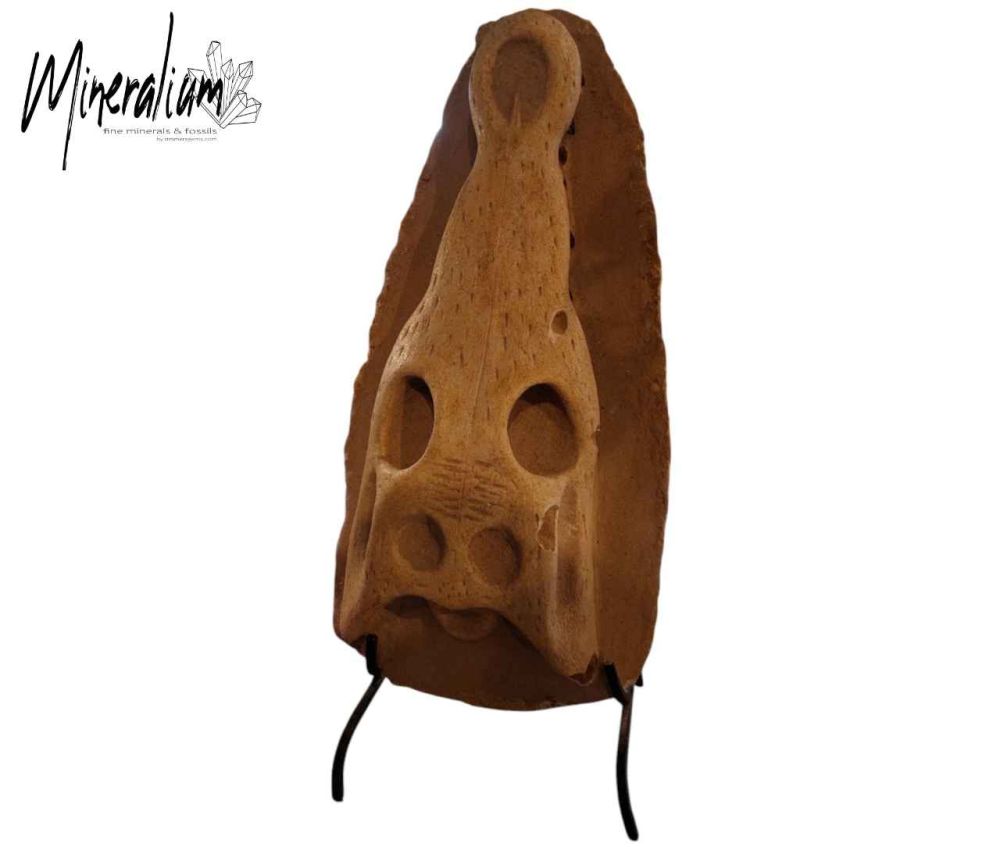We use cookies to make your experience better.
TimmersGems has a new website, existing customers also need to register again.
Fossil crocodile head in bedrock from Sahara/Eerfoud - Morocco.
Despite being composed of various separately found (but original) parts, the original head is beautiful.
Availability:
In stock
SKU
122268
The crocodiles (Crocodylidae) are a family from the order crocodilians (Crocodilia). This family contains the largest species and also some terrifying extinct species. There are 15 species, making it the largest group of the 25 crocodilian species. Alligators, caimans and gavials are crocodilians but belong to different families. Crocodiles have a wide range and are found in Africa, Asia, Australia and North America, and alligators live in North and South America. The largest species is the saltwater crocodile, which has a record length of 8.25 metres. With a maximum length of less than two metres, the broad-fronted crocodile (Osteolaemus tetraspis) is the smallest species. The extinct Deinosuchus may have been up to 15 metres long. It is not certain whether Deinosuchus is a member of the Crocodylidae. In any case, it was a close relative. Apart from the size of the largest species, there are a few physical characteristics that distinguish crocodiles from gharials (Gavialidae), alligators and caimans (Alligatoridae). First, the skull; crocodiles have a fairly long skull of relatively normal width. Also, crocodiles do not have a tongue, while caimans, alligators and gharials do, and the crocodile has a lobe, which is a kind of pouch under its mouth. Crocodiles are on average considerably larger and are generally more dangerous. The teeth are the key to distinguishing them from other families. At the front, the fourth pair of molars protrudes from the lower jaw, fitting into a recess in the upper jaw. The rest of the teeth are hidden inside the mouth when it is closed. In alligators, these protruding teeth are absent, and in gharials, all teeth protrude. Crocodiles are polyphyodonts and can replace each of their 80 teeth up to 50 times in their 35-75 year lifespan. In addition to each adult tooth, there is a small replacement tooth and an odontogenic stem cell in the dental lamina that can be activated. Most species prefer fresh water, but a few can be found at sea. Only the saltwater crocodile lives more in the sea than in freshwater and can travel great distances. In addition to a bite, a crocodile can also strike dangerously with its tail. The Nile crocodile and the saltwater crocodile are the most dangerous species and are responsible for hundreds of deaths each year in Asia and Africa. Crocodiles are very fast over short distances. Many species can even run a short distance. The reflexes are also very well developed to surprise prey or for defence. The jaws are powerful and contain many rows of teeth to tear off flesh. Crocodiles are opportunistic hunters that lie in ambush for prey and strike quickly when a prey animal is within range. Multiple specimens often tear prey to pieces. Observations show that crocodiles have preyed on large ungulates, lions, and even sharks.
| Dimensions | Divers 50-65cm |
|---|---|
| Country of Manufacture | Morocco |












